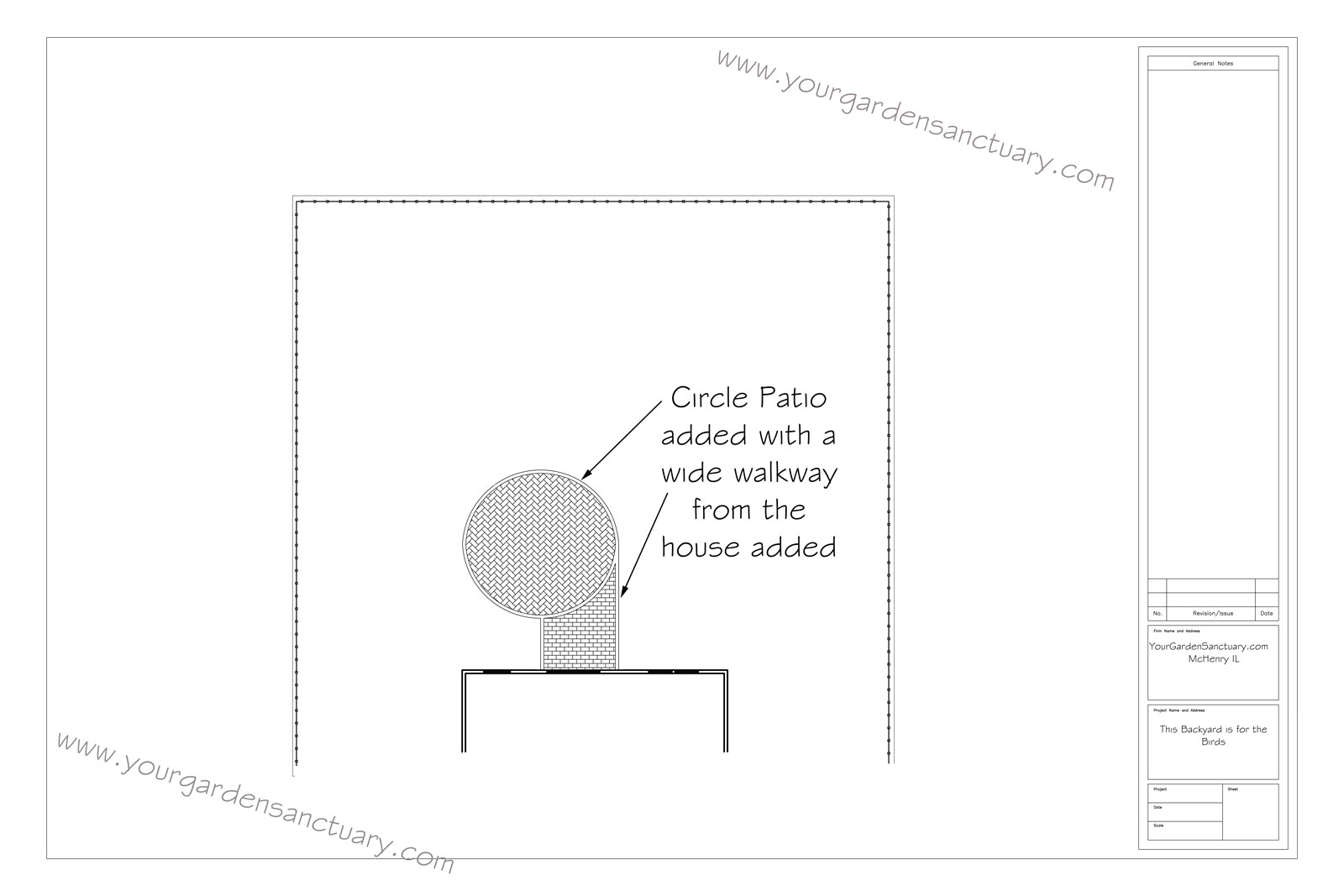Last post, I wrote about writing down what you want from your garden. One goal some people have is to attract birds to their backyard.
Today, I will start a backyard for bird watchers landscape design. It will also be attractive and versatile enough for others to appreciate too.
When we’re all done, we will have a to scale landscape design that will please your fine feathered friends as well as your in laws!
So lets get started.

First step for our backyard for bird watchers
One of the first things I recommend for almost all backyard landscapes is to create a sense of enclosure and privacy. I talked about this before in my post on Enclose your garden to create a sanctuary.
For this design, a 6′ Cedar fence would work. I like styles that look good from both sides like shadow box fences or really detailed ones like the one below.

photo credit: dawniecakes via photopin cc
Here is how our design looks after putting the fence into the plan.

The next thing we want to do is come up with a design theme. By that I mean, how do we layout where our planting beds, turf areas and patio go.
Selecting a Design Theme
Most naturalistic designs tend to use a curvilinear design theme. These have curvy bed lines. Most people tend to gravitate to using this style in their landscaping. We tend to think of it as more natural than a design theme based on straight lines. This is true even though there are plenty of straight lines in nature.

Since we are going to be using a lot of native plant material, it might look a bit too informal if we use an curvilinear design theme. To counteract the “wildness” of the plant materials, lets use some geometric shapes in the design.
I don’t however want a real formal look to our garden, such as I showed in my post on Formal Design Theme from Lines of Force. I therefore will avoid a lot of rectangles and straight lines.
So not all curvy and not too straight. What shape should we use as the basis for our design?
How about the circle?
Circular Design Theme
Using the shape of the circle in landscape design is not new. From Jens Jensen’s council rings to the layout of the stones at Stonehenge, the circle has long been recognized as a powerful shape for laying out the landscape. It’s also a shape that often seen in nature. From fruits and flowers to the sun and the moon, the circle is a commonly seen shape in nature.

photo credit: Teemu008 via photopin cc
Using the circle
We will use mostly circles with a few curves and straight lines thrown in. A great place to start would be with a circular patio placed off of the patio door.

Circles are very strong shapes with a strong inward focus. So we will modify the circle we are using to define the boundary between the planting beds and the turf area. We will make it curve off on the left side of the design. This will make our main bed / turf line a bit less inwardly focused.

Let’s finish up the basic circular layout by extending the turf area from the side yard into the design. We will use a quarter circle modified with some straight lines to make it fit the site.
We will also connect the two areas with a stone path. A slightly curving arc will continue the circular theme.

Next week we will continue our backyard for birdwatchers by starting to select plants for it. See you then.
Bill Plummer says
Why does everybody talk about Backyard This and Backyard That?
What you can do in your backyard you can do in your front yard!
Jim says
Don’t forget side yards for those on corner lots.